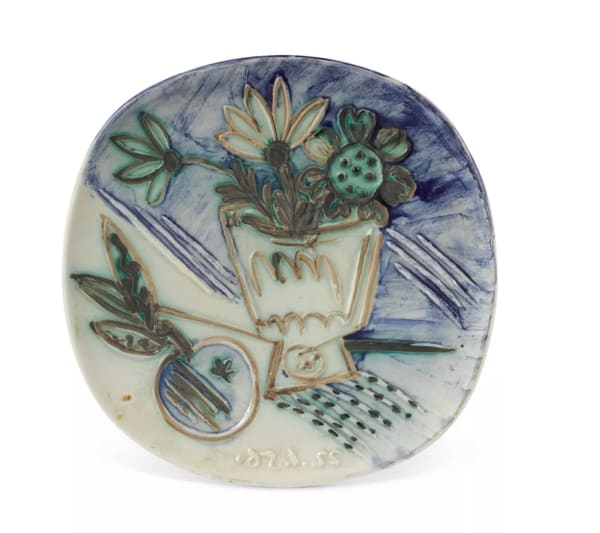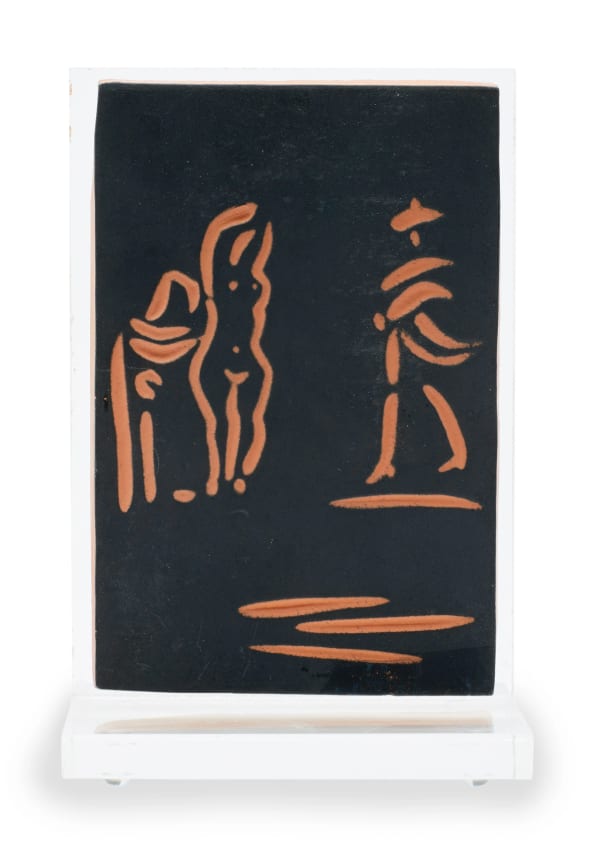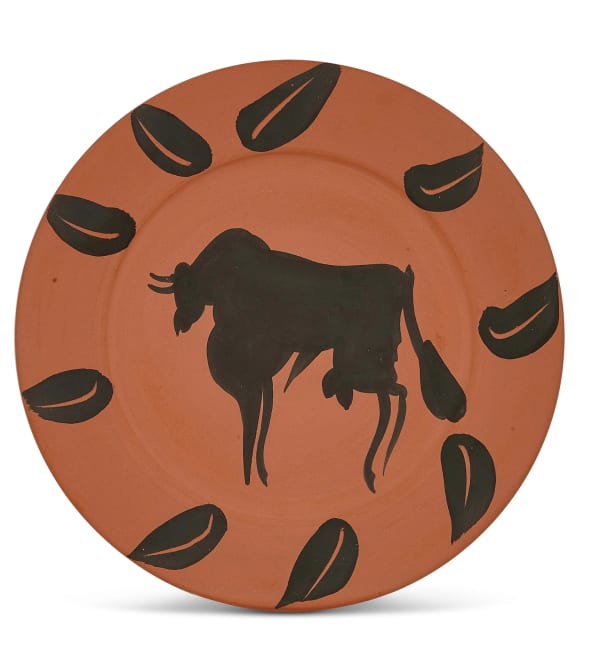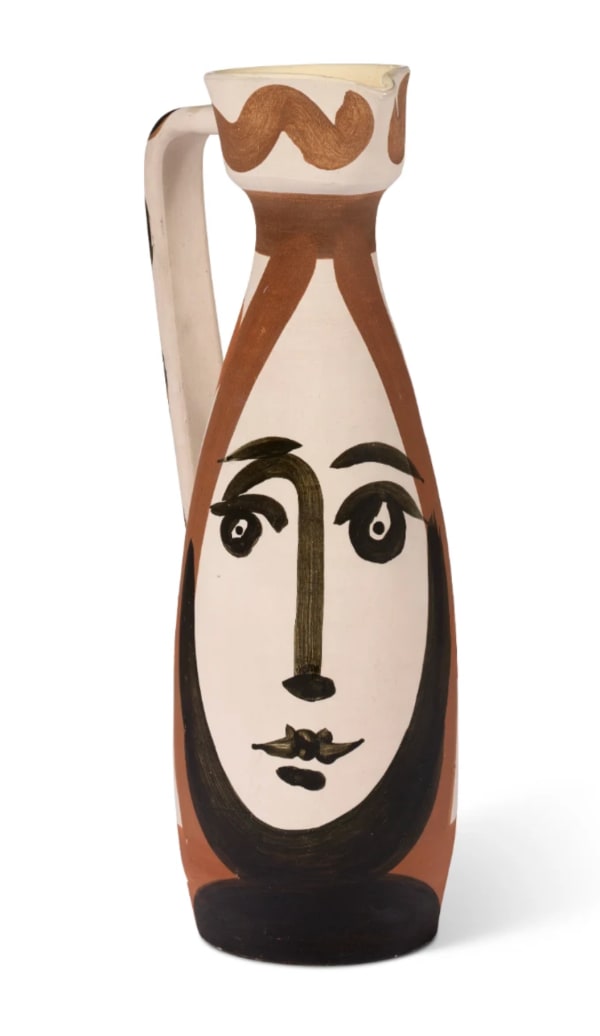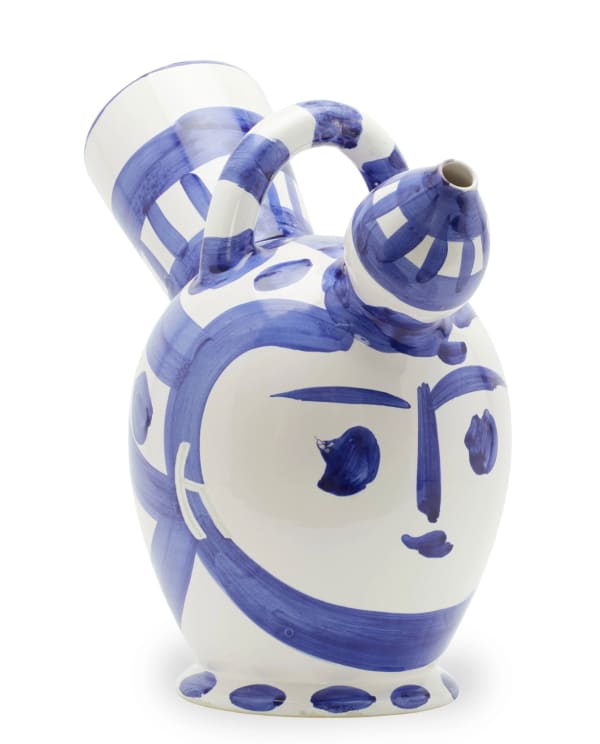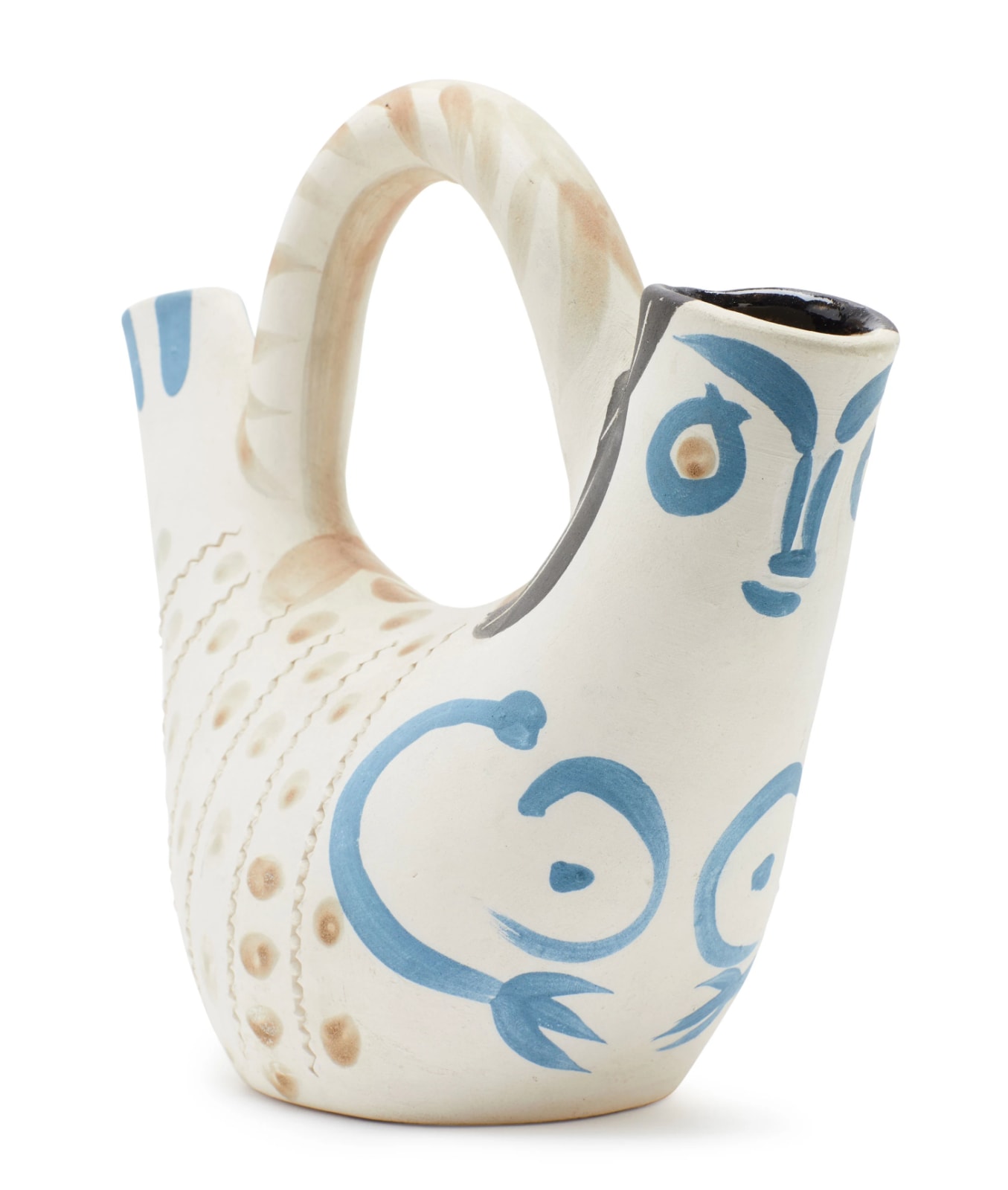
Pablo Picasso
Pablo Picasso’s Figure de proue (1952) is a playful and elegant example of the artist’s sculptural imagination in clay. Crafted at the Madoura workshop in Vallauris, this ceramic pitcher takes on the anthropomorphic form of a stylized bird or female figure, its spout transformed into a face rendered with Picasso’s signature economy of line.
Decorated in soft blue and beige tones with bold, graphic features, Figure de proue - which translates to “figurehead” - embodies the spirit of invention that defined Picasso’s ceramic work. The title nods to maritime tradition, evoking the carved figures that once adorned the bows of ships, and here, the vessel becomes both functional object and mythic emblem.
Merging whimsy with classical poise, the piece captures Picasso’s delight in blurring boundaries between art and craft, sculpture and design. With its graceful contours and expressive personality, Figure de proue stands as a testament to the artist’s belief that even the simplest form could hold infinite creative possibility.
-
 Pablo PicassoBouquet à la pomme , 1956
Pablo PicassoBouquet à la pomme , 1956 -
 Pablo PicassoCorrida sur fond noir, 1953
Pablo PicassoCorrida sur fond noir, 1953 -
 Pablo PicassoCentaure, 1956
Pablo PicassoCentaure, 1956 -
 Pablo PicassoFemmes et toréador, 1968
Pablo PicassoFemmes et toréador, 1968 -
 Pablo PicassoToros, 1952
Pablo PicassoToros, 1952 -
 Pablo PicassoTaureau, marli aux feuilles, 1957
Pablo PicassoTaureau, marli aux feuilles, 1957 -
 Pablo PicassoVisage géométrique, 1956
Pablo PicassoVisage géométrique, 1956 -
 Pablo PicassoVisage, 1965
Pablo PicassoVisage, 1965 -
 Pablo PicassoDanseurs, 1956
Pablo PicassoDanseurs, 1956 -
 Pablo PicassoVisage no. 197, 1963
Pablo PicassoVisage no. 197, 1963 -
 Pablo PicassoVisage, 1963
Pablo PicassoVisage, 1963 -
 Pablo PicassoVisage gravé , 1948
Pablo PicassoVisage gravé , 1948 -
 Pablo PicassoVisage, 1955
Pablo PicassoVisage, 1955 -
 Pablo PicassoPichet à glace, 1952
Pablo PicassoPichet à glace, 1952 -
 Pablo PicassoVisage au nez pincé, 1959
Pablo PicassoVisage au nez pincé, 1959 -
 Pablo PicassoDeux Oiseaux, 1963
Pablo PicassoDeux Oiseaux, 1963 -
 Pablo PicassoGothic Pitcher with Leaves | Pichet gothique aux feuilles, 1952
Pablo PicassoGothic Pitcher with Leaves | Pichet gothique aux feuilles, 1952 -
 Pablo PicassoPaysage, 1953
Pablo PicassoPaysage, 1953 -
 Pablo PicassoFemme échevelée, 1963
Pablo PicassoFemme échevelée, 1963 -
 Pablo PicassoPlongeurs, 1956
Pablo PicassoPlongeurs, 1956 -
 Pablo PicassoPicador, 1952
Pablo PicassoPicador, 1952 -
 Pablo PicassoProfil de Jacqueline, 1956
Pablo PicassoProfil de Jacqueline, 1956 -
 Pablo PicassoProfil de Jacqueline, 1956
Pablo PicassoProfil de Jacqueline, 1956 -
 Pablo PicassoTaureau sous l'arbre, 1952
Pablo PicassoTaureau sous l'arbre, 1952 -
 Pablo PicassoService visage noir, 1948
Pablo PicassoService visage noir, 1948
Join our mailing list
* denotes required fields
We will process the personal data you have supplied in accordance with our privacy policy (available on request). You can unsubscribe or change your preferences at any time by clicking the link in our emails.
This website uses cookies
This site uses cookies to help make it more useful to you. Find out more about cookies.
